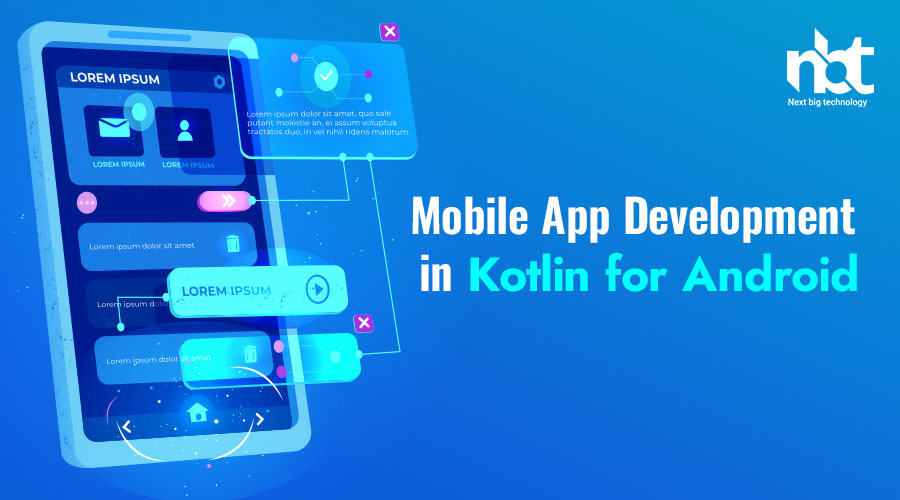Table of Contents
Introduction
Mobile app development has become an integral part of our digital experience. In the realm of Android, Kotlin has positioned itself as a powerful and versatile programming language, offering a plethora of benefits for developers.
A. Brief Overview of Mobile App Development
Developing mobile applications involves creating software for use on mobile devices. This process encompasses various stages, including ideation, design, coding, testing, and deployment.
B. The Significance of Kotlin for Android Development
Kotlin, officially supported by Google, has gained traction for its concise syntax, enhanced readability, and seamless interoperability with Java. Its modern features and robust capabilities have become the preferred language for Android app development.
Getting Started with Kotlin
A. Overview of Kotlin Programming Language
Kotlin, designed to be fully interoperable with Java, brings modern language features to Android development. Its expressive syntax and reduced boilerplate code make it an ideal choice for developers.
B. Advantages of Using Kotlin for Android App Development
Kotlin offers a range of advantages, including null safety, type inference, and coroutines for efficient asynchronous programming. Developers can leverage these features to enhance the performance and reliability of their Android applications.
C. Setting Up the Development Environment
Before diving into Kotlin app development, it’s essential to set up the development environment. This involves installing Android Studio, configuring the Kotlin plugin, and ensuring compatibility with the latest Android SDK.
Kotlin Features for Mobile App Development
A. Conciseness and Readability
Kotlin’s concise syntax allows developers to write more expressive code with fewer lines. This improves code readability and reduces the likelihood of errors, enhancing the overall development experience.
B. Interoperability with Java
One of Kotlin’s standout features is its seamless interoperability with Java. Developers can gradually migrate their existing Java codebases to Kotlin, fostering a smooth transition and allowing for the coexistence of both languages.
C. Null Safety and Type Inference
Kotlin addresses the notorious null pointer exceptions by introducing null safety features. The language’s type inference system further streamlines development, reducing the need for explicit type declarations.
D. Coroutines for Asynchronous Programming
Kotlin’s coroutines facilitate efficient and scalable asynchronous programming. This feature is crucial for handling concurrent tasks, such as network requests and background processes, without compromising app responsiveness.
Building User Interfaces with Kotlin
A. Kotlin Android Extensions
Kotlin Android Extensions simplify the process of working with Android views and layouts. Developers can concisely access views, enhancing the efficiency of UI development.
B. Declarative UI with Jetpack Compose
Jetpack Compose, a modern UI toolkit for Android, allows developers to build declarative user interfaces using Kotlin. This approach simplifies UI development by describing the desired UI state, reducing boilerplate code.
C. Improving UI Responsiveness with Kotlin Features
Kotlin’s features, such as coroutines, contribute to improved UI responsiveness. Developers can write asynchronous code more elegantly, ensuring a seamless user experience in their Android applications.
Kotlin Libraries and Frameworks
A. Popular Libraries for Android Development
Kotlin benefits from a rich ecosystem of libraries that enhance the development process. Libraries like Retrofit for Networking and Room for Database Management streamline common tasks, allowing developers to focus on building robust features.
B. Integration with Android Jetpack Components
Android Jetpack, a set of libraries and tools, integrates seamlessly with Kotlin. This collaboration simplifies the development of key components such as navigation, data binding, and lifecycle management.
C. Leveraging Third-Party Kotlin Frameworks
In addition to Jetpack, developers can explore third-party Kotlin frameworks to accelerate app development further. These frameworks often provide specialized tools for specific functionalities, empowering developers to create feature-rich applications.
Debugging and Testing in Kotlin
A. Debugging Tools and Techniques
Effective debugging is crucial for identifying and resolving issues in the development process. Kotlin, integrated with Android Studio, offers robust debugging tools that aid developers in diagnosing and fixing bugs efficiently.
B. Unit Testing and Test-Driven Development (TDD) with Kotlin
Kotlin supports unit testing and test-driven development, contributing to the creation of reliable and maintainable code. Writing tests alongside the code helps ensure that each component functions as intended, reducing the likelihood of post-release issues.
Best Practices in Kotlin App Development
A. Code Organization and Readability
Organizing code clearly and readably is essential for collaboration and maintenance. Following best practices in code organization ensures that developers can easily understand and contribute to the codebase.
B. Performance Optimization Tips
Kotlin offers various performance optimization techniques, such as inline functions and smart casting. Employing these strategies enhances the speed and efficiency of the application, providing a better user experience.
C. Security Considerations in Kotlin App Development
Security is a top priority in mobile app development. Developers should be mindful of secure coding practices, data encryption, and secure communication to safeguard user information and maintain the integrity of the application.
Continuous Integration and Deployment
A. Streamlining the CI/CD Pipeline
Continuous Integration (CI) and Continuous Deployment (CD) automate the process of code integration, testing, and deployment. Integrating Kotlin projects into a CI/CD pipeline ensures a smooth and efficient development workflow.
B. Automating the Deployment Process with Kotlin
Automated deployment processes simplify the release of new features and updates. Leveraging CI/CD tools compatible with Kotlin enables developers to streamline deployment and deliver timely updates to users.
Future Trends in Kotlin Development
A. Kotlin Multiplatform for Cross-Platform Development
Kotlin Multiplatform is an emerging trend that allows developers to share code between multiple platforms, including Android, iOS, and web. Exploring this feature opens up new possibilities for cross-platform development.
B. Exploring Emerging Kotlin Features and Updates
Kotlin continues to evolve with updates and new features. Staying informed about the latest developments empowers developers to leverage cutting-edge tools and techniques in their Android app development journey.
Real-world Examples
A. Showcase Successful Kotlin-Based Android Apps
Examining successful Kotlin-based Android apps provides valuable insights into the capabilities of the language. Case studies demonstrate how developers have utilized Kotlin to create innovative and impactful applications.
B. Lessons Learned from Notable Case Studies
Analyzing lessons learned from notable case studies offers practical takeaways for developers. Understanding the challenges and successes of others can inform decision-making and improve the overall development process.
Conclusion
In conclusion, mobile app development in Kotlin for Android brings a host of benefits to developers. From concise code to enhanced UI development and robust testing capabilities, Kotlin has become a cornerstone in the Android development ecosystem.
Encouraging developers to explore Kotlin’s potential is key to fostering innovation and creating exceptional user experiences. As technology evolves, staying abreast of future trends ensures that developers can continue to push the boundaries of what is possible with Kotlin in Android app development.
Thanks for reading our post “Mobile App Development in Kotlin for Android”. Please connect with us to learn more about Mobile App Development.















